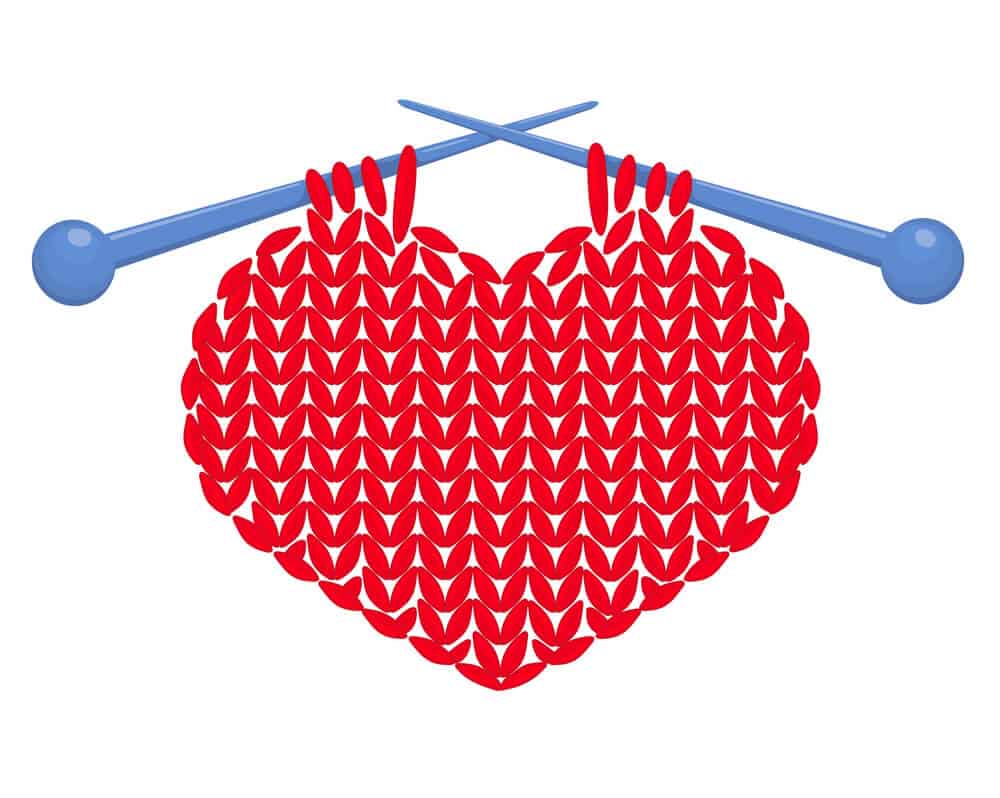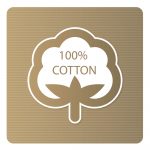Knitting is a crafting skill that can be made as sustainable as you want it to be.
One of the most important parts of developing a sustainable knitting practice is choosing the right yarn and devoting yourself to finding ethically sound sources.
If you were considering living an entirely self-sustaining life, then knitting would give you the opportunity to do so.
Depending on how deep you wanted to develop your practice, that is.
Knitting has many uses and offers knitters the opportunity to expand their role from creator to user and even to the supplier, making it one of the most sustainable crafts of all.
You do not have to be prepared for a life in the wild just to enjoy a little bit of hand-knit goods. Just by purchasing locally from a handmade knitter, you can play your own role in developing your own sustainable lifestyle.
I do suggest engaging in some research before throwing out your closet and investing all your money, though!
What Yarn Should I Use to Knit?
Knitting is all about the yarn! So, it goes without saying that choosing an ecologically friendly yarn choice would be an important part of establishing your sustainable knitting practice.
I encourage you to experiment with every type of yarn.
However, as far as sustainability goes, you should know which yarns negatively impact the environment so you can avoid making them a part of your everyday knitting practice.
Instead, consider sustainable yarns which may be more expensive but will certainly have more value.
Sustainable yarns:
- Silk
- Hemp
- Upcycled yarn
- Bamboo
- Organic cotton
- Tencel
Semi-sustainable yarns:
- Wool
Harmful Yarns:
- Acrylics
- Nylon
- Polyester
- Synthetic dyes
Eco Cult gives a clear breakdown of the different types of yarns and why they should or should not be used.
Harmful yarns are chemically filled and tend to contain microplastics.
The microplastics of these harmful yarns make them not biodegradable.
These fabrics cause issues for the future of our Earth and are a leading reason for the evolving trash pandemic.
On the other hand, sustainable yarns take the environment into consideration from beginning to end, including biodegradation.
In fact, most sustainable yarns are plants that require all-natural farming techniques.
Others include upcycled yarn which is essentially yarn on its second life.
So, to answer ‘is knitting sustainable?’ you first need to ask ‘what type of yarn am I using?’.
By far one of the most notable and modernly recognized yarns is hemp, which is recognized for its sustainability and renewability.
Hemp fabric is made from the long strands of fiber that make up the stalk of the Hemp plant.
But, because Hemp is a plant, the yarn can only be considered sustainable if the entire process has been approved as sustainable.
This means the Hemp supplier must be approved as a sustainable supplier by using organic farming practices.
Organic farming practices can include anything from no pesticides to specific water requirements and so much more.
As long as the farmer abides by the set requirements, they can become approved otherwise they will be ‘greenwashing’ their company which is essentially the owner making their business appear green when it really isn’t.
Paying close attention to your suppliers and knowing how to choose proper yarn is an important part of establishing a sustainable practice for knitters and consumers alike.
The prices might be higher for some of the high-end sustainable yarns; however, the benefits far outweigh any costs.

How Do I Make Knitting More Sustainable?
Here are a few ways that you can make your knitting more sustainable and eco-friendly for the environment.
● You can buy and use yarn that is made from plant sources to knit.
● You can buy and use yarn that has come from recycled knitted products.
● You can make sure that you use all the yarn that you buy to knit so that there are no leftover pieces.
Should I Use Wool to Knit?
Wool is an all-natural resource harvested from sheep and alpaca which is among the most frequently suggested yarns when people think of knitting.
Although this delicate fiber is typically labeled as sustainable, you might be surprised to know that wool actually makes a massive ecological footprint.
Wool leaves an ecological footprint because the sheep farming industry emits massive amounts of greenhouse gasses.
There have also been extensive reports by PETA that the sheep undergo extreme animal neglect during large wool production.
This evidence of animal cruelty and greenhouse emissions is enough to deter some sustainable knitters from using wool entirely.
Instead, they opt for more eco-friendly options like hemp, Tencel, or organic cotton which are more humane and do not have as large of an ecological footprint.
Wool has been used as yarn to knit for centuries and the shearing of sheep is required for their health and safety.
So, using wool is always an option as long as you find a humane source that you trust.
Like anything else, you should always be wary and do your due diligence before going into any partnerships.
I suggest visiting the farm firsthand and watching them shear sheep before purchasing any wool.
How Should I Wash Knit Clothing?
The sustainability process does not merely stop after the knitter sets down their needles.
In fact, knitting increases consumer sustainability because of the lifestyle change it enacts.
Knit items require hand washing and do not follow typical washing patterns.
This means no more wasting water on small loads of laundry and even more importantly, no more poisoning the fish with nasty, toxic chemicals!
The washing machine has become one of the top household must-haves but as far as sustainability goes, it is at the bottom of the list.
Washing machines waste large amounts of water and they release nearly one million microplastics into the open ocean with every wash.
To make a difference, a lifestyle change must be adapted and luckily, that lifestyle change can start with knitting.
Typically, knit garments are not worn directly on the skin, and instead, they are the overcoats or dresses you have on top of your light clothing.
Knit clothing and knit accessories, therefore, do not need to be washed each time they are worn.
So, after a day in your knit garment, the only washing you will do is a quick pat down with a damp cloth before hanging it up again to refresh.
If you do encounter a spill or a stain, hand-knit items call for a hand cleaning with mild, non-alkaline soap which does not waste water or impact the environment with harsh chemicals as laundry detergents do.
Always remember to reshape your items before letting them air dry. Knit items can easily become misshapen after being exposed to water.
If you forget to reshape your clothing, it is possible that it will not return to normal.
The same follows for all handknit items. Avoid throwing them in the washing machine unless the tag’s item says it is approved.
If you are confused, feel free to take it by your local cleaners.
How Do I Know if My Knitting is Sustainable?
As a knitter, building a sustainable practice is important to yourself and to the knitting community.
While it is easy to purchase cheap, Nylon yarn, you will find in time that choosing the more expensive sustainable yarns is far more beneficial.
Not only do sustainable yarns yield better results but they also help the environment.
This is why you should always remember quality over quantity.
When you are tempted to buy the bulk set of bright and flashy colors remember you can get an expensive roll of yarn for just as much and it will produce something fifteen times better.
Your practice can be as sustainable as you want.
Whether you are a knitter or not, you can choose how much you want to involve knitting in your life.
Can I Buy Sustainable Knit Clothing?
You do not need to be a knitter to be a part of the knitting community.
If you are interested in building a sustainable clothing wardrobe just add more knit clothing.
As build your eco-friendly wardrobe, be sure to buy from small businesses and local vendors instead of large retailers or high-dollar brands.
You may notice these items are priced higher, however, they are handmade and the quality will be guaranteed.
Massive amounts of clothing end up in landfills each year including many knit clothes which could have otherwise been upcycled!
As a consumer of knit clothing, you can help knitters by donating your knit clothing so they can reuse your yarn.
You may also try going to a yarn swap where you can trade your old sweaters with knitters so they can create new knit items.
In both cases, your items will stay clear from the landfills and the knitters will turn them into something new and unique for someone else to enjoy.
How Can I Knit More Eco-Friendly?
Whether you want to be entirely self-sustainable or just sustainable enough, your knitting practice can be just as sustainable of practice as you would like it to be.
It is a simple and yet intricate art form which can do everything from clothe you to carry your food.
Sustainability is about minimizing your need for excess and with knitting, you can easily do that.
In fact, depending on the yarn you use and the investments you are willing to make, knitting can be a completely self-sustaining life practice.
You do not have to be a knitter to engage in an eco-friendly lifestyle. Simply by purchasing handknit clothing from your local small businesses, you are giving back to the knitting community.
You may also choose to recycle your knit clothing which helps knitters continue using high-quality threading like wool without forcing a rise in the agriculture industry.



